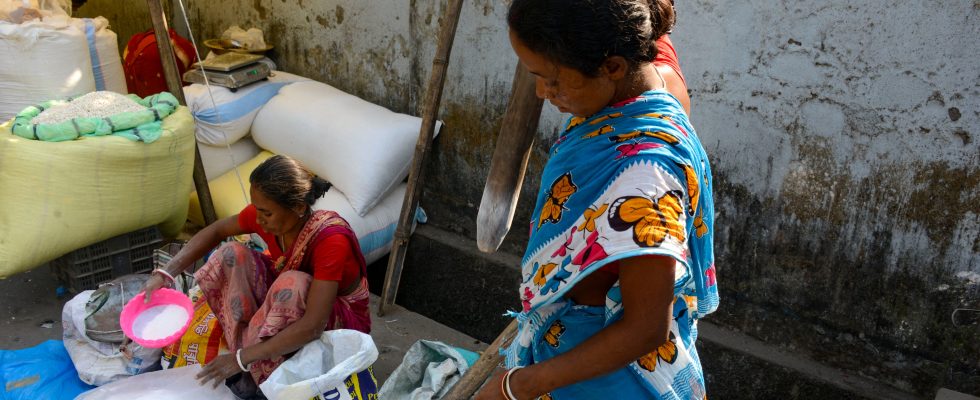It is a measure that aims to reduce the increase in prices on the internal market. India, the world’s leading rice exporter – it alone accounts for more than 40% of global shipments – has banned the export of non-basmati white rice.
According to the Indian Ministry of Consumer Affairs and Food, this ban “with immediate effect” should “ensure” an “adequate” supply for Indian consumers and “mitigate the rise in prices in the domestic market”, as it declared in a press release published Thursday July 20 in the evening. Bloomberg specifies that rice prices on the domestic market have increased by more than 8% in 2023. For its part, the Indian government mentions an increase of 11.5% in retail prices over 12 months, and 3% last month.
The ministry says the government’s decision affects a quarter of the country’s total rice shipments. On the other hand, no restriction weighs on basmati rice, which represents “the bulk” of Indian exports of the cereal, allowing “farmers to continue to benefit from remunerative prices on the international market”, indicates the press release.
In the second quarter of 2023, India’s exports of non-basmati white rice jumped 35% year on year, the Ministry of Consumer Affairs and Food said. Last year, the country exported 10.3 million tonnes, which altogether accounts for about a quarter of India’s total rice exports.
Rising international prices
In September 2022, after a major drought in its main rice-producing regions, India had already banned exports of broken rice (lower-priced rice, with grains broken accidentally or not) and imposed a 20% tax on exports of high-quality rice.
As reminded Release, the late onset of the seasonal monsoon resulted in a significant rainfall deficit until mid-June, adversely affecting rice harvests, a staple food for more than three billion people around the world. Heavy rains in northern India in recent weeks have damaged newly planted crops, forcing farmers to re-sow crops.
International prices for rice, a major staple in the world, have risen sharply due to the Covid-19 pandemic, the war in Ukraine and the impact of the El Niño weather phenomenon on rice paddy yields. World prices are now at their highest level in eleven years. This rise is not expected to stop due to the Indian government’s decision.
The risk of “exacerbating food insecurity”
India’s decision could also “risk exacerbating food insecurity in countries heavily dependent on rice imports”, warned in a note the company Gro Intelligence, which analyzes data on raw materials. African countries, Turkey, Syria and Pakistan are expected to suffer from the ban, as they already face high food price inflation, Gro Intelligence added.
“India would disrupt the global rice market with much greater speed than Ukraine did in the wheat market with the invasion of Russia,” BV Krishna Rao, chairman of the Rice Exporters Association, told Reuters.
According to Rabobank analyst Oscar Tjakra, other rice suppliers do not have reserves to compensate for the halt in Indian exports of non-basmati white rice. Apart from India, “the main exporters are Thailand, Vietnam and, to some extent, Pakistan and the United States,” the analyst told AFP. But “they won’t have enough rice to replace” the unexported Indian volumes, he warned. Obviously, this will contribute to inflation in the world, because rice can be used as a substitute for wheat.”
